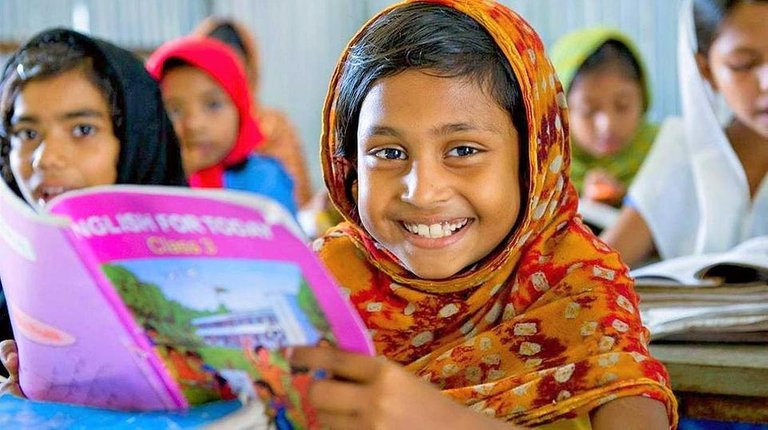The current education and health conditions allows a child born today in Bangladesh to be 48 percent as productive as she could have been according to World Bank research on Human Capital Index Photo: UNICEF Bangladesh A child born today in Bangladesh would be more productive than his peers in India and Pakistan, as the country fared better than its larger regional competitors in a new World Bank ranking.
Bangladesh has been ranked 161th country on human capital list, improved more than India and Pakistan, a new study published in The Lancet showed.
The country has witnessed improvement in the health and learning of its workforce since 1990.
This could have long-term beneficial effects on the Bangladesh economy.
The study is the first of its kind to measure and compare the strength of countries’ human capital, reports
The study, conducted by the IHME at the request of the World Bank president, underscores that when a country’s human capital score increases, its economy grows.
Bangladesh’s ranking of 161th out of 195 countries in 2016 represents an improvement of nine notches from its 1990 ranking of 170th.
However, during that period, India improved only 4 notches from 162 to 158 and Pakistan only one from 165 to 164, the Institute for Health Metrics and Evaluation (IHME) said.
Bangladeshis have 6.1 years of expected human capital, measured as the number of years a person will work in the years of peak productivity, taking into account life expectancy, functional health, years of schooling, and learning.
Bangladeshis have 6.1 years of expected human capital, measured as the number of years a person will work in the years of peak productivity, taking into account life expectancy, functional health, years of schooling, and learning.
The study looks at how many years between the ages of 20 and 65 – when people are most active in the workforce – they can expect to live.
On average, Bangladeshis lived 40.7 of those 45 years. That put Bangladesh at 118 of 195 countries. Nepal, Pakistan and India all scored below Bangladesh in this component of the study, but Sri-Lanka scored better.
Bangladeshis have an expected educational attainment of 8.2 years out of a possible of 18 years in school; as compared to Pakistan 8.6 years and India 10.4 years out of a possible of 18 years in school.
Bangladeshis struggle with sickness and disability at work. The study’s measure of functional health – which calculates the work impact of ailments like stunting, hearing and vision loss, or infectious diseases like malaria or tuberculosis – ranked Bangladesh at 165 in the world. India’s functional health ranking is significantly lower at 187.
Bangladesh does slightly better in terms of education quality. The study measures the quality of learning in school and Bangladesh ranked 132 in the world – lower than Nepal (ranked 127), Bhutan (120), and Myanmar (106), but higher than India (150).
Learning is based on average student scores on internationally comparable tests.
The study places Finland at the top, with the highest human capital score in the world.
Turkey showed the most dramatic increase in human capital between 1990 and 2016. Asian countries with notable improvement include China, Thailand, Singapore, and Vietnam.
Within Latin America, Brazil stands out for improvement.
All these countries have had faster economic growth over this period than peer countries with lower levels of human capital improvement.
In addition, the greatest increase among sub-Saharan African countries was in Equatorial Guinea. Some of the world’s most rapid improvements were in the Middle East, including Saudi Arabia and Kuwait.

